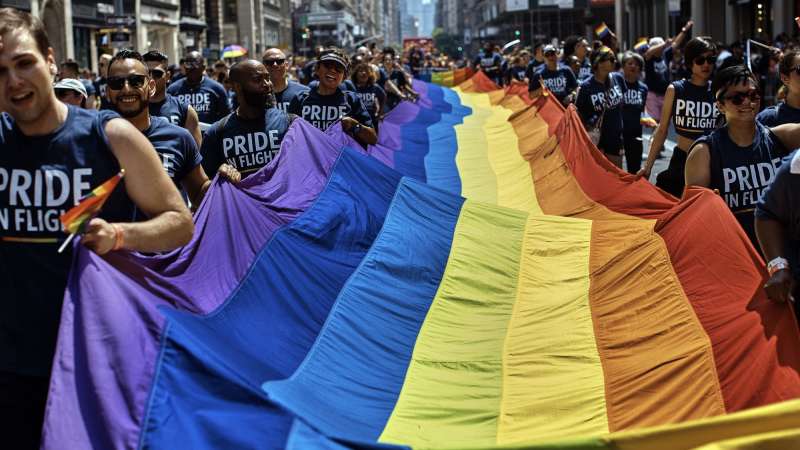
另有一種詞彙標記讓我們傾向於把這種用法分成兩個單獨的「次意義」:愈來愈多人使用「marriage」時會搭配使用修飾語,以便告訴讀者他們指哪種婚姻。相對而言,在一九九○年代以前,「marriage」很少被「gay」(同性戀的)、「straight」(異性戀的)、「heterosexual」(異性戀的)、「homosexual」(同性戀的)或「same-sex」(同性)之類的詞語修飾。到了二〇〇〇年,這些字眼經常修飾「marriage」:《韋氏大學英語詞典第十一版》在二〇〇三年出版時,「marriage」最常搭配的修飾語是「gay」和「same-sex」6。這就表示「marriage」的兩個有趣(且看似矛盾)的事實:它被用來表示同性戀的婚姻,所以才要使用「gay」、「same-sex」和「homosexual」的修飾語,而人們又想區分同性婚姻與異性婚姻,因此會加上「heterosexual」和「straight」的修飾語。如果我們先前找到更多描述伴侶關係卻沒有使用修飾語的「marriage」用法(不管伴侶性別為何),我們就會認為「gay」婚姻的「意義」和「heterosexual」婚姻的「意義」正融合為一體。修飾語表示一種見解的差異(此處等同於詞彙解釋的差異)。
我們是最後做出這種修訂的主要字典出版商:編字典的週期難以預測,《美國傳統英語詞典》和《牛津英語詞典》早在二〇〇〇年便收錄涵蓋同性婚姻的定義或用法注釋7。《牛津英語詞典》替既有的定義(「The condition of being a husband or wife; the relation between persons married to each other; matrimony」〔擔任丈夫或妻子的狀態;彼此結婚的人之間的關係;亦即婚配〕)增加用法注釋,如此寫道:「The term is now sometimes used with reference to long-term relationships between partners of the same sex」(這個詞現在偶爾用來指同性伴侶之間的長期關係),並且要讀者參照「gay」的條目。《美國傳統英語詞典》在二○○○年修訂了「marriage」條目的第一個「意義」8,改成「A union between two persons having the customary but usually not the legal force of marriage」(兩人之間具有習俗約定但通常不具婚姻法律效力的結合)。到了二〇〇九年,這項說法又被改成「The legal union of a man and woman as husband and wife, and in some jurisdictions, between two persons of the same sex, usually entailing legal obligations of each person to the other」(男女雙方作為丈夫和妻子的合法結合,在某些司法管轄區域,可指同性之間的結合,通常要求雙方彼此負起法律義務)。Dictionary.com也收錄涵蓋同性婚姻含義的定義9:「a relationship in which two people have pledged themselves to each other in the manner of a husband and wife, without legal sanction: trial marriage; homosexual marriage」(代表一種關係,雙方以丈夫和妻子的形式相互立誓,沒有法律許可:試婚;同性戀婚姻)。





























